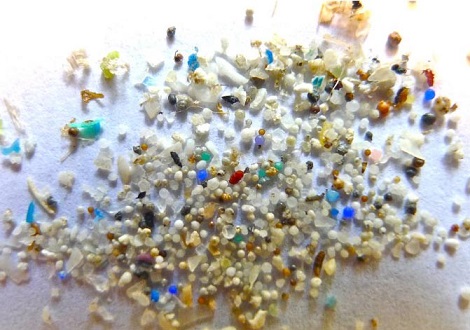Nikhil Prasad Fact checked by:Thailand Medical News Team Sep 02, 2024 7 months, 2 days, 4 hours ago
Medical News: Microplastics Are A Growing Concern for Human Health
In a world increasingly dominated by plastic, new research reveals that microplastics may pose significant risks to human health, particularly in the urinary tract. This
Medical News delves into a recent study that highlights the dangers of microplastics, or nanoplastics (MNPs), which have been found in various human organs, including the urinary tract. The researchers, hailing from institutions like Bond University-Australia, Murdoch University-Australia, and Dubai Police Scientists Council-UAE, among others, warn that these tiny plastic particles could contribute to serious health issues such as bladder disease, chronic kidney disease, and urinary tract infections.
 Microplastics in water are threatening our urinary tract
The Scope of the Study: Examining the Presence of Microplastics
Microplastics in water are threatening our urinary tract
The Scope of the Study: Examining the Presence of Microplastics
The researchers conducted a comprehensive scoping review, examining 18 studies that investigated the presence of microplastics in the human urinary tract. These studies were selected from a broader pool of over 2,500 articles, narrowed down to focus specifically on research related to the human urinary system. The study aimed to answer key questions about the characteristics of these plastics, the methods used to detect them, and the potential health consequences of their presence.
The presence of microplastics in the urinary tract was confirmed in various studies, with particles being found in human urine, kidney samples, and bladder cancer tissues. For instance, microplastics were identified in 54% of the urine samples, 68% of bladder cancer samples, and 70% of kidney samples. These findings are alarming, considering that the World Health Organization (WHO) previously downplayed the risks of microplastics in drinking water, stating there was no evidence of a threat to human health.
What Are Microplastics Doing to Our Bodies?
Microplastics, defined as particles less than 5 millimeters in size, can originate from various sources, including the breakdown of larger plastic items and microbeads found in cosmetics. These particles can be ingested, inhaled, or absorbed through the skin, leading to their accumulation in various organs, including those of the urinary tract.
Once inside the body, microplastics have been shown to cause several harmful effects. The studies reviewed in this scoping review reveal that microplastics can trigger inflammation, decrease cell viability, and disrupt normal cellular processes. For example, microplastics were found to increase the activation of mitogen-activated protein kinases (MAPK) signaling pathways, which are linked to inflammation and cancer development.
Additionally, microplastics have been observed to induce oxidative stress and apoptosis (cell death) in renal cells, which could contribute to kidney damage over time. This is particularly concerning for individuals with pre-existing kidney conditions, as microplastics could exacerbate their health issues.
The Broader Implications: Rethinking Our Relationship with Plastics&
lt;br />
The findings of this scoping review challenge the previous assumptions about the safety of microplastics. The WHO's 2019 report, which suggested that microplastics in drinking water did not pose a significant threat to human health, is now being called into question. As research on this topic continues to grow, it is becoming increasingly clear that microplastics may have more serious health implications than previously thought.
Given the widespread presence of microplastics in the environment and their potential to cause harm, there is an urgent need for more research to better understand their effects on human health. This research should inform public health policies and lead to the development of guidelines for reducing exposure to microplastics.
Moreover, the findings of this study underscore the importance of re-evaluating the use of plastics in everyday life. As the production of plastics continues to rise, so too does the risk of microplastic contamination. This issue is not only an environmental concern but also a public health one that requires immediate attention.
Conclusion: The Need for Action
The study findings published in the peer-reviewed Journal of Exposure Science & Environmental Epidemiology provide a stark reminder of the hidden dangers of microplastics.
https://link.springer.com/article/10.1038/s41370-024-00709-3
As evidence of their harmful effects on human health continues to mount, it is clear that action must be taken to address this growing issue. This includes not only further research but also changes in public policy and consumer behavior to reduce the production and use of plastics.
In conclusion, the presence of microplastics in the human urinary tract represents a significant public health concern. The potential for these particles to cause inflammation, cellular damage, and even cancer cannot be ignored. As we continue to uncover the full extent of the impact of microplastics on human health, it is essential that we take steps to mitigate their presence in our environment and our bodies.
For the latest on Microplastics and human health, keep on logging to Thailand
Medical News.
Read Also:
https://www.thailandmedical.news/news/new-study-finds-that-bottled-water-consumption-linked-to-increased-risk-of-chronic-diseases
https://www.thailandmedical.news/news/microplastics-causes-innate-immunity-dysregulation-in-covid-19-infected-lungs
https://www.thailandmedical.news/news/microplastics-found-in-testicular-tissue
https://www.thailandmedical.news/news/microplastics-found-in-human-blood-a-new-health-threat
https://www.thailandmedical.news/news/covid-19-news-indian-researchers-warn-that-microplastics-in-waste-water-could-be-aiding-sars-cov-2-transmission
